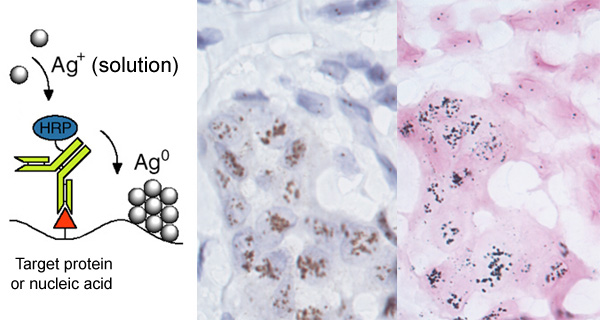Review Paper Describes Development and Use of New Enzyme Metallography (EnzMetTM) Reagent for In Situ Hybridization
Nanoprobes, Incorporated has developed a new system for super-sensitive, high-resolution detection for use in in situ hybridization (ISH) and immunohistochemistry (IHC). The new process uses an enzyme-linked probe to deposit metal from solution at a target site; this provides a dense, punctate, high resolution black stain which is readily distinguished from other commonly used stains. This new detection method, termed "Enzyme Metallography" (EnzMetTM) has several important advantages for pathology and tissue study. It is visualized in the conventional brightfield light microscope, and hence does not require the use of fluorescent optics or dark adaptation on the part of the user. It provides a permanent record, with no fading or photobleaching; and it can visualize single copies of even non-amplified genes.
The development of this method and its application to HER2 gene amplification in breast cancer are described in a review in the August issue of Human Pathology. Nanoprobes recently signed a deal with Ventana Medical Systems, Incorporated, for commercial development and use of this reagent in their automated slide staining instruments. As a result, the first commercial product has now been introduced in Europe; it is called SISH (Silver In Situ Hybridization). Introduction of SISH in the United States is pending FDA approval. In addition, Nanoprobes will shortly introduce a commercial EnzMetTM formulation optimized for research applications and non-automated staining.

